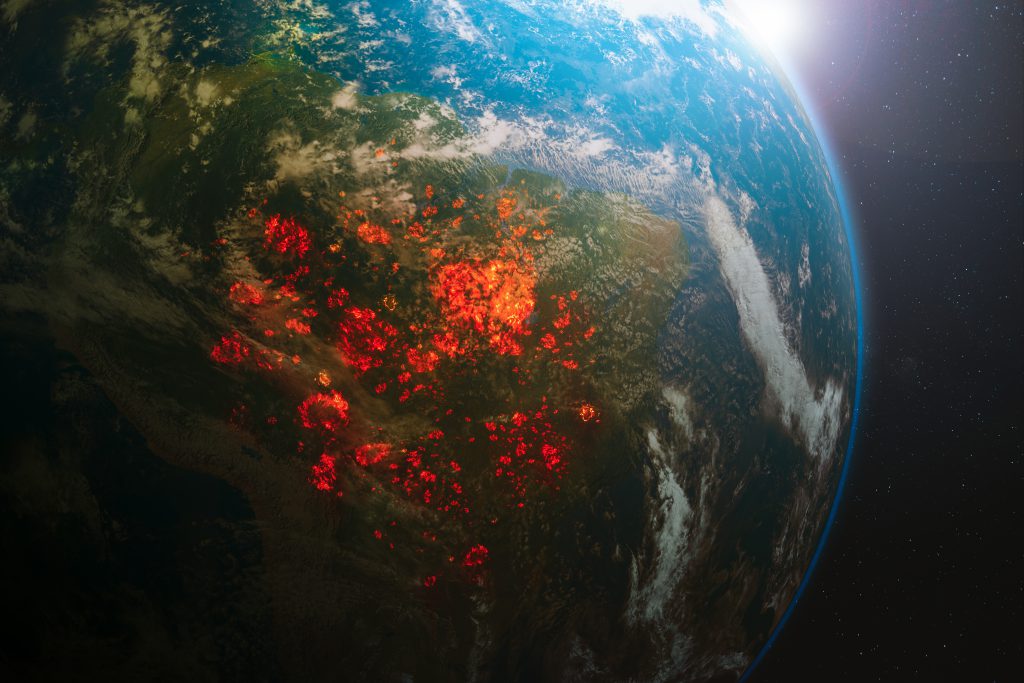Realizing Children’s Rights in Jamaica
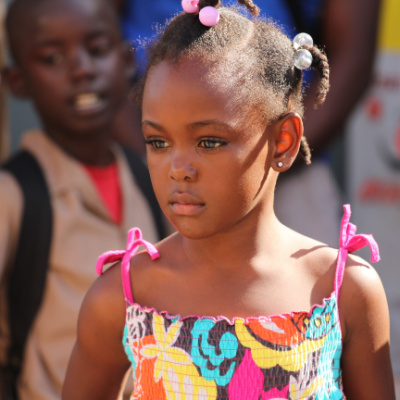
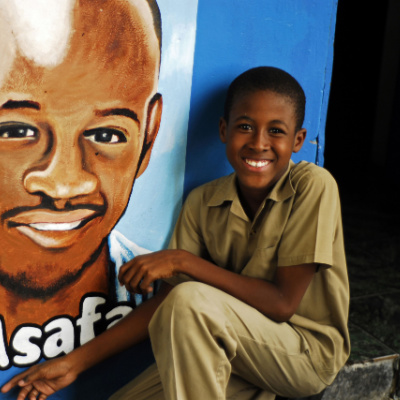
Although there have been efforts by the Jamaican government to improve the conditions of life for Jamaican citizens, there remains a need to boost health infrastructure, access to educational facilities and overall safety. Children in Jamaica face numerous challenges such as sexual exploitation, poverty, child labour and child trafficking.

Children’s Rights Index: 8,42 / 10
Yellow level: Satisfactory situation
Population: 2.9 million
Pop. ages 0-14: 23 %
Life expectancy: 75 years
Under-5 mortality rate: 13 ‰
Jamaica at a glance
Jamaica is an island situated in the Caribbean Sea. It is located 145 km south of Cuba and 161km southwest of Haiti. A beautiful country, it boasts mountain ranges that extend from east to west with many small rivers and streams flowing to the north and south of the central plateau before descending into the Caribbean Sea through lowlands and coastal plains (Embassy of Jamaica, n.d.). Along the coastline, one can find secluded bays, beautiful beaches, natural harbours and jagged cliffs and if one moves inland, the country is home to several picturesque waterfalls, thermal springs and limestone caves (Embassy of Jamaica, n.d.).
The capital is Kingston, and it is located on the southeast coast. Jamaica’s most notable natural resources are limestone, gypsum and bauxite and its celebrated biodiversity sets the framework in which one can find and abundance of birdlife and over three thousand species of plants, of which one-quarter are found nowhere else on the planet (Embassy of Jamaica, n.d.).
The past sets the foundation upon which a country builds itself which is why in order to understand the present socio-cultural and economic reality, one must turn to history. Jamaica’s history is tainted by colonization. Christopher Columbus arrived on the island in 1494 but despite him calling it Santiago, the indigenous name of Jamaica, or Xaymaca is the one that ultimately persisted (James A. Ferguson, n.d.).
Jamaica’s colonial history is reflected in the island’s numerous Spanish, French and English place names. The majority of its population are of African descent and were historically slaves brought by European colonists (James A. Ferguson, n.d.).
Although Jamaica gained independence from the United Kingdom on 6 August 1962, it remains a member of the Commonwealth and retains the British monarch as head of state in its constitution (James A. Ferguson, n.d.). Jamaica has a constitutional monarchy with a parliamentary system of government with the prime minister assuming the role of head of government.
The chief policy-making body is the cabinet composed of the prime minister and at least 11 other ministers. The PM is appointed by the political party in power from its parliamentary members. The British monarch who is understood as the titular head of state, follows the PM’s recommendation in selecting a Jamaican governor-general who primarily has ceremonial powers (James A. Ferguson, n.d.).
Status of children’s rights [1]
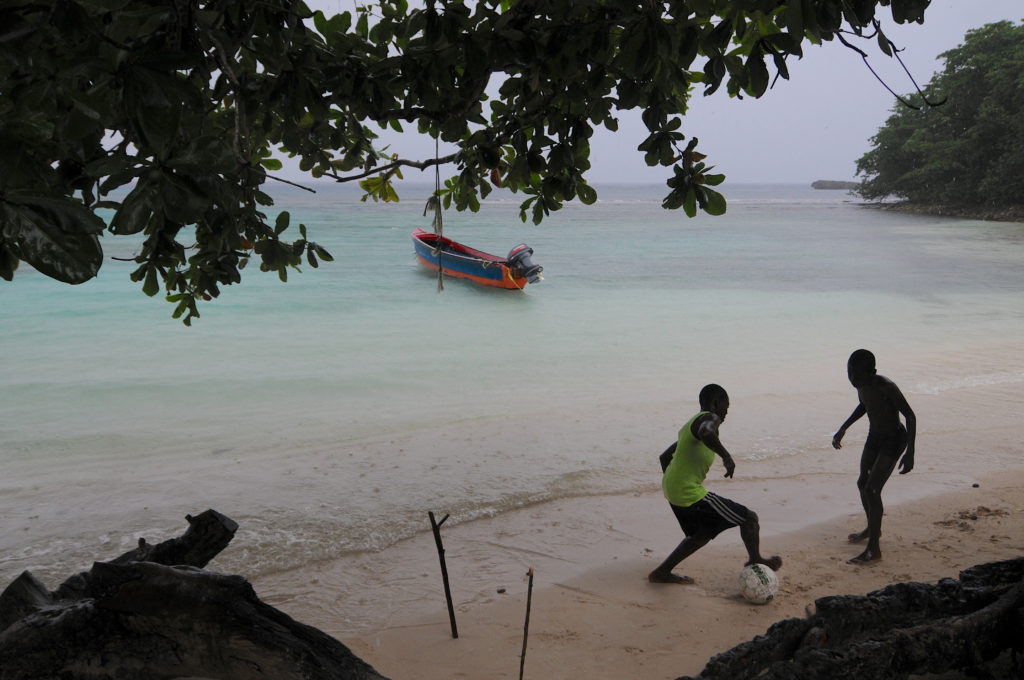
On an international level, Jamaica ratified the Convention on the Rights of the Child (CRC) which is an essential treaty that protects the rights of children in all aspects of life. Beyond that, Jamaica ratified the Optional Protocol to the Convention on the Rights of the Child on the Involvement of Children in Armed Conflict (CRC-OP-AC) in 2002 and the Optional Protocol to the Convention on the Rights of the Child on the sale of children child prostitution and child pornography (CRC-OP-SC) in 2011.
In regard to other international treaties, Jamaica ratified the Convention on the Elimination of All Forms of Discrimination against Women (CEDAW) in 1984, the Convention on the Rights of Persons with Disabilities (CRPD) in 2007 and the International Convention on the Protection of the Rights of All Migrant Workers and Members of Their Families (CMW) in 2008.
Addressing the needs of children
Right to education
While Jamaica has made a number of efforts to promote access, quality and equity in regard to education, significant gaps remain (UNICEF, n.d.). The majority of children have access to publicly funded education, but the consequences of poverty set the scene for absence, chronic under-performance and in some cases, the failure to carry out their entire education (UNICEF, n.d.).
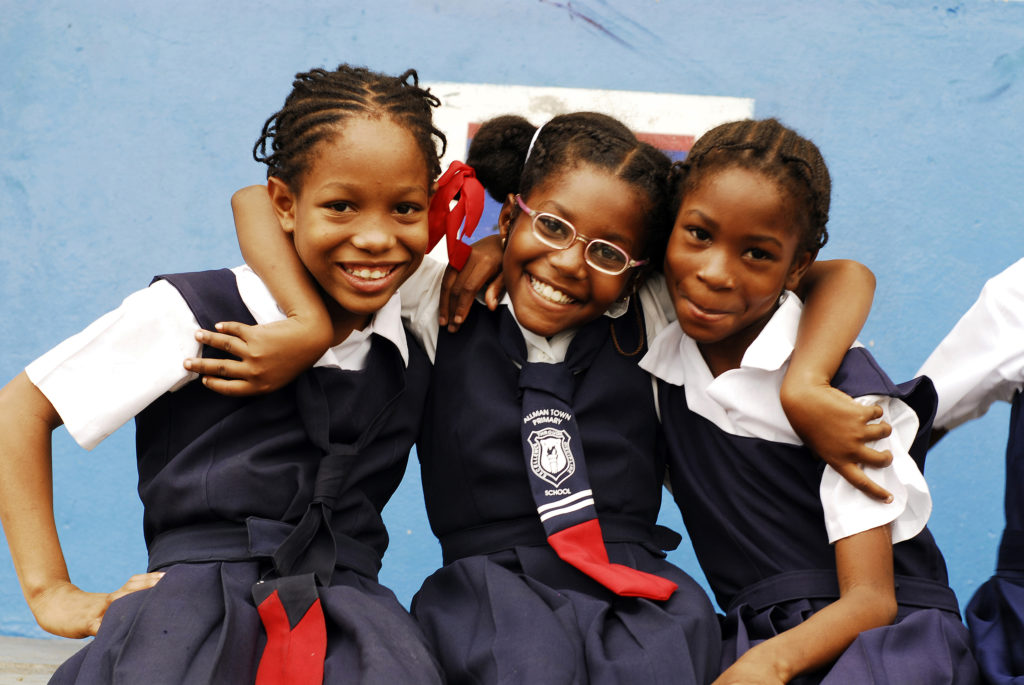
There is a very obvious distinction between public and private schools and those attending public schools assume the risk of leaving and thereby not acquiring the comprehensive knowledge required for reading and writing (Babb, 2018). Another significant hindrance in regard to education, more specifically access to education, is the lack of road safety. Children are the most vulnerable road users and are oftentimes incapable of judging vehicle speeds and distance as they make their way to and from school (UNICEF, n.d.).
Unfortunately, road crashes and near misses have a direct impact on Jamaican children which in turn prevents them from accessing their education (UNICEF, n.d.). In 2021, 483 road fatalities were recorded, out of which 69% were those belonging to the most vulnerable groups of road users: pedestrians, motorcyclists and children (UNICEF, n.d.). Of these road fatalities in 2021, 25 were children (UNICEF, n.d.).
The Covid-19 pandemic had a massive impact on education for children across the globe as a result of school closures and the shift to online learning. However, while some countries had the infrastructure in place to ensure that this is a relatively smooth transition, a lot of countries faced colossal challenges in the field of education.
In a report by the World Bank and UNICEF, in collaboration with UNESCO, it is estimated that four in five sixth graders in Latin America and the Caribbean (LAC) will lack basic reading comprehension and proficiency (World Bank-UNICEF, 2022). While prior to the pandemic, there was already the reality of a learning crisis, this has led to a significant increase, and this suggests that the two-year school closure may have set learning outcomes back by more than a decade (World Bank-UNICEF, 2022).
“The fact that a large majority of sixth graders may not be able to understand what they read, jeopardizes the future well-being of millions of children who have not developed critical foundational skills, which increases the risks to deepen the already long-standing inequities in the region.”Carlos Felipe Jaramillo, World Bank Vice President for Latin America and the Caribbean. (World Bank-UNICEF, 2022)
Right to health
Although Jamaican children have access to universal healthcare, it is severely compromised as a result of deep-rooted income inequities that by extension create vulnerabilities for children, more specifically those living in rural and urban inner-city areas(UNICEF, n.d.). Breast milk contains all the energy and nutrients an infant needs during the first months of life and breastfeeding is one of the most effective ways to ensure child health and survival (WHO, n.d.).
Unfortunately, this is not a given in the life of children born in Jamaica and most Jamaican infants do not get an ideal start to life through breastfeeding with mothers on average only breastfeeding exclusively for three weeks(UNICEF, n.d.). As children grow up, they face numerous health challenges of which the most major ones are STD/HIV infection, obesity, and mental health (UNICEF, n.d.).
In 2018, researchers found an increase in job dissatisfaction among health practitioners in Jamaica as a result of the removal of charges for health services because of an increased workload which by extension led to poor physical and emotional status (Adella Campbell, 2019). What also came as a consequence was an unavailability of resources, a lack of medical equipment, a shortage of staff as well as a lack of administrative support (Adella Campbell, 2019).
However, Jamaica is working to enhance the quality of its medical facilities. In 2019, the Ministry of Health and Wellness announced that over the next five years, the country will be upgrading public health facilities with funds of $200 million (Holenstein, 2020). Of the many hospitals and health centres that will be upgraded, one is the Cornwall Regional Hospital which will benefit more than 400,000 residents (Holenstein, 2020). In addition to upgrading existing centres and hospitals, the Minister plans to build a new Western Child and Adolescent Hospital (Holenstein, 2020).
Right to protection
An estimated 80% of Jamaican children experience some form of physical or psychological violence administered to them under the pretext of discipline (UNICEF, 2018). In 2015, the Office of the Children’s Registry (OCR), logged an average of 268 reports of child abuse per week and in 2016, the Planning Institute of Jamaica (PIOJ) reported a rate of 643 children being victims of serious, violent crimes such as shooting, robbery, murder and rape(UNICEF, 2018). Schools, homes, and communities are meant to create safe environments to protect children but, unfortunately, 80% of children are abused in these spaces either physically, sexually, or psychologically (UNICEF, 2018).
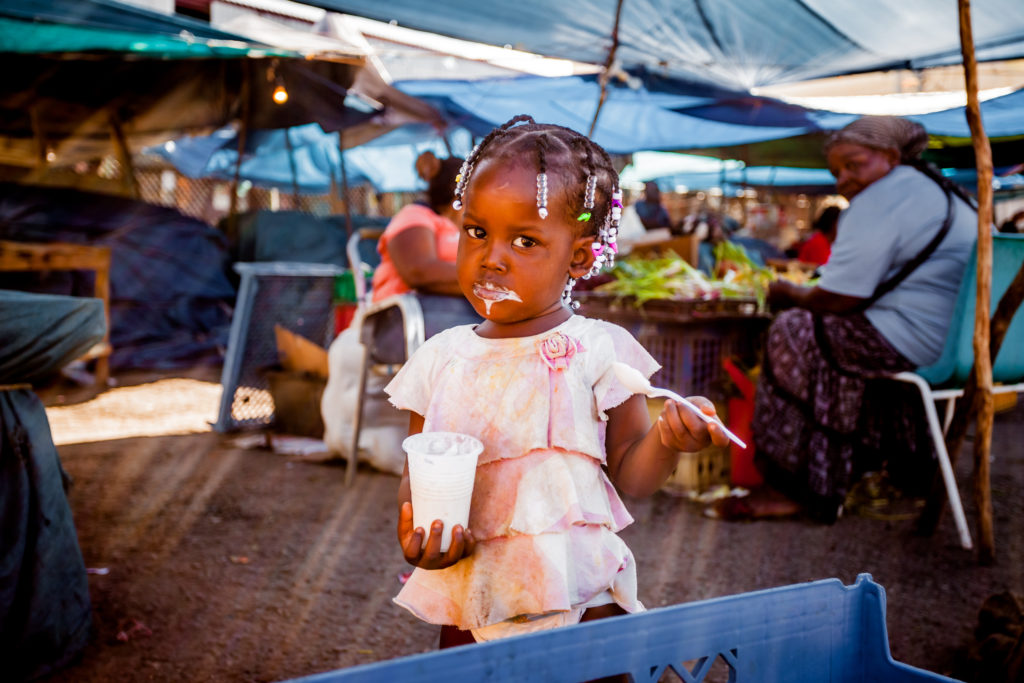
The founding of the National Parenting Support Commission (NPSC) was a response to the reality of violence in the country and is meant to offer support both at the family level as well as community levels to ensure a growing number of wholesome, positive parenting practices(UNICEF, 2018). Jamaica also made significant improvements in regard to legislation and between 2005 and 2015, twelve pieces of legislation relevant to the protection of children from violence were enacted/amended by the Jamaican Parliament(UNICEF, 2018).
Adding to that, several policy documents, national plans and protocols were both drafted and approved. In response to the lack of psychological support for children, the government quadrupled the number of psychologists available (UNICEF, 2018). These essential developments have significantly contributed to a robust legal framework that aims to prevent violence against children (UNICEF, 2018). However, although the tools to tackle violence have been established, the state has yet to sufficiently strengthen its institutional framework to implement and enforce these laws pertaining to crime and violence against children (UNICEF, 2018).
Risk factors → Country-specific challenges
Sexual exploitation
Sexual abuse is one of the fastest-growing crimes that adversely affect children in Jamaica and the second most common cause of injury among females in that country (Wilson-James, 2021). In fact, most often females are the victim of sexual abuse and Jamaica faces one of the highest rates of female sexual abuse averaging more than three times the global average (Wilson-James, 2021).
Patriarchal beliefs that have been entrenched in society for centuries are oftentimes a stimulus for abuse as there is an equation of male dominance and female subordination (Wilson-James, 2021). In Jamaica, male sexual entitlement is bolstered through longstanding patriarchal beliefs and, although the country’s Sexual Offences Act deems sexual relations between an adult and a person under 16 illegal, the reality is not one that reflects an upholding of this act (Wilson-James, 2021).
Child sexual abuse is also commonly kept away from public discourse because of the cloud of taboo that surrounds it. This sets the stage for victims not coming forth and a widespread prevalence of underreporting (Wilson-James, 2021).
Child trafficking
Jamaica is a destination and source country where children are trafficked for child labour and commercial sexual exploitation to countries such as the United States, Canada and the United Kingdom (Bureau of International Labor Affairs, 2020). Most often, the most vulnerable groups to trafficking and child sexual exploitation are immigrant children, young girls, children from rural areas belonging to poor families and LGBTQI+ youth(Bureau of International Labor Affairs, 2020). Children are also recruited by criminal organizations and are made to take part in illicit activities and numerous children are reported missing, and there is a possibility that they have been subjected to forced labour (Bureau of International Labor Affairs, 2020).
Poverty
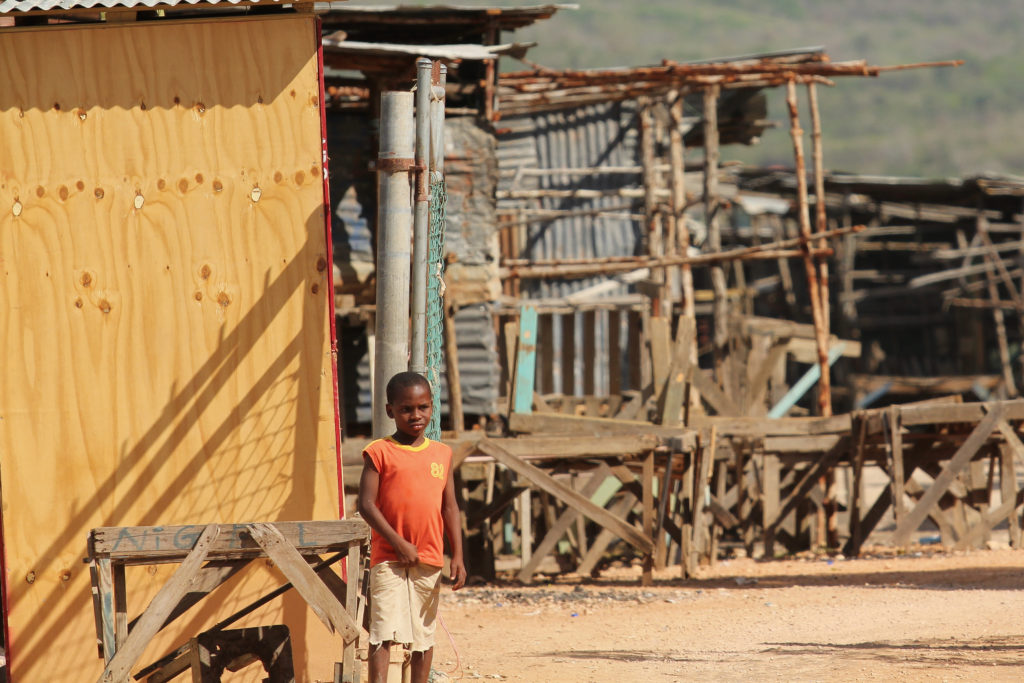
Children in Jamaica are unfortunately faced with poverty on a daily basis, with one amongst four living in poverty and thereby experiencing many health issues, a reduction in access to proper sanitation and water facilities and a higher chance of being exploited(UNICEF, n.d.). As with many other countries worldwide, the Covid-19 pandemic has severely affected several sectors of Jamaica as well, with the country’s economic activities declining by more than 5% in 2020(UNAIDS, 2022).
This also led to the fact that the poverty rate increased from 19% in 2018 and 2019 to around 23% in 2020(UNAIDS, 2022). The most affected by the crisis have been working women who account for an estimated 78% of healthcare and humanitarian workers, as well as 55% of staff in industries such as commerce and tourism who took a big hit(UNAIDS, 2022).
In an effort to tackle surmounting challenges as a result of poverty, the government ramped up its recovery efforts and established a special task force to effectively respond to the economic setbacks and in this context, Jamaica also requested emergency financing from the IMF in the amount of $520 million(IMF, 2020).
One of the most prominent efforts was the implementation of a social and economic support program called the CARE Programme launched by the government. The program provides grants to those who were left unemployed as a result of the pandemic as well as to those who were informally employed pre-pandemic, small businesses and those who are self-employed and have faced a disruption in their earnings (IMF, 2020).
Child labour
Jamaica has endorsed the three most important international legal instruments in regard to child protection, them being the UN Convention on the Rights of the Child (CRC), and the ILO Convention NO. 182 (the Worst Forms of Child Labour Convention) and ILO Convention No. 138 (the Minimum Age Convention) (ILO, 2018). However, despite these advances, the reality is that child labour is still a prevalent issue.
In Jamaica, child labour affects 38,000 children ranging from five to seventeen (ILO, 2018). Because of a lack of electricity coverage and water, a large number of children are made to fetch water or collect firewood. There is also an obvious difference in the involvement in child labour between the urban and rural sector with the latter having twice the rate as compared to the former (ILO, 2018).
A direct consequence of child labour is an interference with schooling which in turn leads to poor youth employment outcomes as a result of compromised education (ILO, 2018). If work poses itself in a child’s life in a way where there are impacts on academic performance or attendance, then children exposed to the realities of child labour will not have the human capital required for decent work upon entering adulthood (ILO, 2018).
Environmental challenges
Jamaica is extremely dependent on natural resources and is vulnerable to natural disasters, especially along the coast such as flooding and hurricanes. The agricultural sector is crucial for the economy to thrive contributing about 7% of the country’s GDP and employing around 18% of the labour workforce (Climate Change Knowledge Portal, n.d.). Jamaica faces severe threats from rising temperatures, droughts, and floods as well as an existential threat as a result of rising sea levels (Climate Change Knowledge Portal, n.d.).
The country is expected to undergo constant cycles of warming and drying trends and a higher frequency of droughts, heavy rainfall and rising sea levels. The North Atlantic hurricane season coincides with Jamaica’s monsoon and the Caribbean Sea’s highest levels of convective and conducive activity and rainfall that lasts longer than two days is associated with 67% of severe flooding events (Climate Change Knowledge Portal, n.d.).
Written by Aditi Partha
Last edited on 10 July 2022
Bibliography:
Adella Campbell, V. M. (2019). The Removal of Charges for Health Services in the Jamaican Public Health System: Impact on the Health Practitioners’ Performance. Jamaica: Horizon Research Publishing. Accessed on 10 July 2022.
Babb, S. (2018, July 7). /Five facts about educationinjamaica/. Retrieved from Borgen Project: https://borgenproject.org/education-in-jamaica/ , accessed on 10 July 2022.
Bureau of International Labor Affairs. (2020). /agencies/ilab/resources/reports/child-labor/jamaica. Retrieved from DEPARTMENT OF LABOR: https://www.dol.gov/agencies/ilab/resources/reports/child-labor/jamaica, accessed on 10 July 2022
Climate Change Knowledge Portal. (n.d.). country/jamaica. Retrieved from Climate Change Knowledge Portal: https://climateknowledgeportal.worldbank.org/country/jamaica, accessed on 10 July 2022
Embassy of Jamaica . (n.d.). /about_jamaica/geography.htm. Retrieved from Embassy of Jamaica : https://www.embassyofjamaica.org/about_jamaica/geography.htm, accessed on 10 July 2022.
Holenstein, N. (2020, May 30). healthcare-in-jamaica/. Retrieved from Borgen Project: https://borgenproject.org/healthcare-in-jamaica/, accessed on 10 July 2022.
ILO. (2018). Child labour and the youth decent work deficit in Jamaica. International Labour Organization. Accessed on 10 July 2022
IMF. (2020, May 28). /en/News/Articles/2020/05/27/na052720-jamaica-ramps-up-social-and-economic-support-in-covid-19-response. Retrieved from International Monetary Fund: https://www.imf.org/en/News/Articles/2020/05/27/na052720-jamaica-ramps-up-social-and-economic-support-in-covid-19-response, accessed on 10 July 2022.
James A. Ferguson, P. B. (n.d.). /place/Jamaica. Retrieved from Britannica: https://www.britannica.com/place/Jamaica, accessed on 10 July 2022.
James A. Ferguson, P. B. (n.d.). /place/Jamaica/Government-and-society. Retrieved from Britannica: https://www.britannica.com/place/Jamaica/Government-and-society, accessed on 10 July 2022.
UNAIDS. (2022, May 5). /en/resources/presscentre/featurestories/2022/may/20220505_Jamaica_social_protection. Retrieved from UNAIDS: https://www.unaids.org/en/resources/presscentre/featurestories/2022/may/20220505_Jamaica_social_protection, accessed on 10 July 2022.
UNICEF. (n.d.). /jamaica/health-promotion. Retrieved from UNICEF: https://www.unicef.org/jamaica/health-promotion, accessed on 10 July 2022.
UNICEF. (n.d.). /jamaica/lifelong-learning. Retrieved from UNICEF: https://www.unicef.org/jamaica/lifelong-learning, accessed on 10 July 2022.
UNICEF. (n.d.). /jamaica/lifelong-learning/road-safety. Retrieved from UNICEF: https://www.unicef.org/jamaica/lifelong-learning/road-safety, accessed on 10 July 2022.
UNICEF. (n.d.). /jamaica/social-protection. Retrieved from UNICEF: https://www.unicef.org/jamaica/social-protection, accessed on 10 July 2022.
UNICEF. (2018). Situation Analysis of Jamaican Children. Jamaica: UNICEF.
WHO. (n.d.). /health-topics/breastfeeding#tab=tab_1. Retrieved from WHO: https://www.who.int/health-topics/breastfeeding#tab=tab_1, accessed on 10 July 2022.
Wilson-James, V. (2021). The Influences of Cultural Norms on Child Sexual Abuse Prevention of Female Adolescents in Jamaica. Walden University., accessed on 10 July 2022.
World Bank-UNICEF. (2022, June 23). /en/news/press-release/2022/06/23/education-latin-america. Retrieved from World Bank: https://www.worldbank.org/en/news/press-release/2022/06/23/education-latin-america, accessed on 10 July 2022.
[1] This article by no means purports to give a full or representative account of children’s rights in Jamaica; indeed, one of many challenges is the scant updated information on the children in Jamaica, much of which is unreliable, not representative, outdated or simply non-existent.

